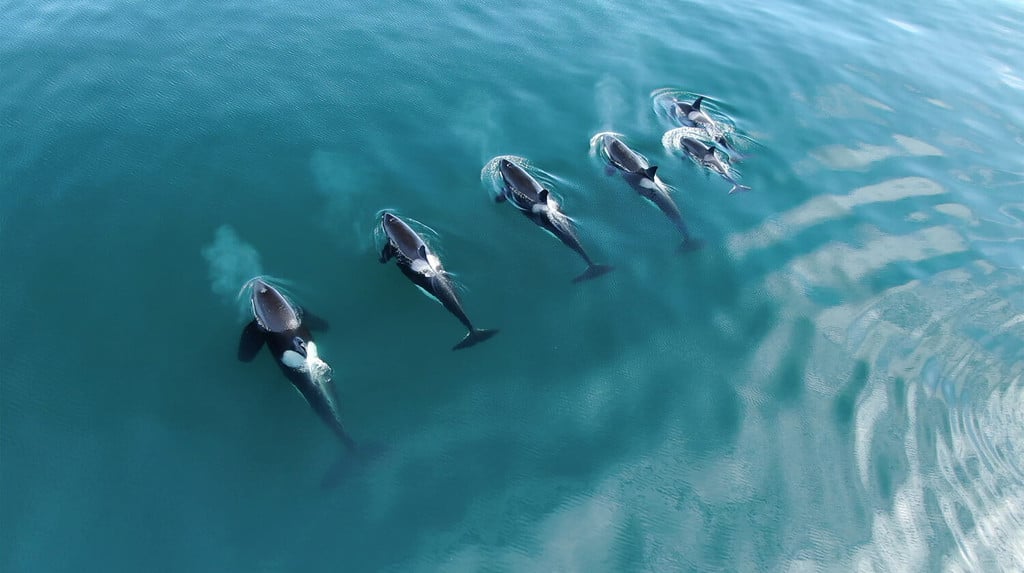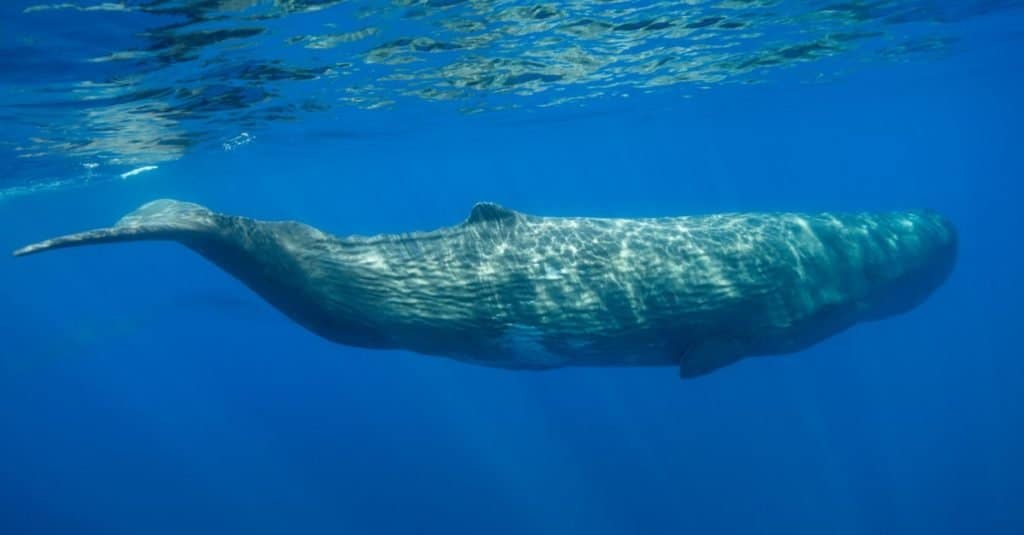The California coast is an excellent destination for whale-watching enthusiasts! While some whales can be seen year-round, others will only appear during specific months. If it’s your dream to see a specific type of whale, you can plan accordingly using this page for your trip.

1. Fin Whale
Did you know that the fin whale is the second-largest whale species? This specific species travels along the southern coastline of California. You can catch a glimpse of these creatures from October to July in Los Angeles. This is because they migrate between Mexico and Alaska during these months. This whale is easy to spot thanks to a specific fin on its back near the tail.

Fin whales can live for over 80 years.
©Leonardo Gonzalez/Shutterstock.com
2. Killer Whale
Killer whales, also known as orcas, are some of the deadliest predators in the ocean. You might be surprised to find that they belong to the Delphinidae family, commonly known as dolphins. They were named “killer whales” by ancient sailors who watched them hunting and preying on whale species larger than them. You can see orcas year-round along the coast, though they tend to be easiest to find in Monterey Bay during the springtime.

Whales, like these orcas, swim in pods.
©Willyam Bradberry/Shutterstock.com
3. Minke Whale
The minke whale is a part of the baleen or “great” whale family. They can be seen all year round during specific seasons on the California coast. One exciting aspect of this species is its tail. The tall, sickle-shaped dorsal fin on their back. They also tend to have a defined, white band that runs along their middle, between their dark flippers. You might be able to hear their recently discovered “boing” sounds when they vocalize with each other!

The minke whale is the smallest member of the baleen whales.
©Tim Watters/Shutterstock.com
4. Humpback Whale
Humpback whales travel great distances! The best time to spot a humpback whale is from late April to early December on the northern California coast. They’re a favorite for many whale watchers because of how active they can be on the water’s surface. The way they jump out of the water and slap their fins is a joy to watch.

The humpback whale has one of the longest migrations of any mammal on Earth.
©Tomas Kotouc/Shutterstock.com
5. Gray Whale
Gray whales can be seen often along the coastline. You can see them during their southern migration in winter, then again on their return trip north between February and May. This charismatic whale has a dark gray color and splotchy white patches. They also lack a dorsal fin. Instead, they have a dorsal hump on the back of their bodies. Their curious nature brings them close to boats, which makes it even easier to spot them.

A parent California gray whale with its offspring.
©Travis Potter/Shutterstock.com
6. Blue Whale
If you want to be sure to spot a blue whale, you should head to Monterey Bay in the summer and fall seasons. Thousands of blue whales can be spotted off the coast during this time. These are the largest animals to have ever lived on our planet! These slenderly-shaped whales tend to have a mottled pattern that appears blue underwater.

Blue whales
swim near the shore when a predator is nearby
©Andrew Sutton/Shutterstock.com
7. Sperm Whale
If you want to catch a sighting of a sperm whale, be sure to visit the California coastline from November to April. While primarily dark gray in color, they can have patches of white on their bellies. They are the largest species of all the toothed whales! Their deep dives of over 10,000 feet occur while hunting for food. They can be spotted on the surface while recovering from their dives.

Sperm Whales are world-class divers. The mammals have been recorded descending to depths of over 3,280 feet and can go 90 minutes between breaths.
©wildestanimal/Shutterstock.com
Summary of the Types of Whales Along the California Coast
| Whale Species | |
|---|---|
| #1 | Fin Whale |
| #2 | Killer Whale |
| #3 | Minke Whale |
| #4 | Humpback Whale |
| #5 | Gray Whale |
| #6 | Blue Whale |
| #7 | Sperm Whale |
Thank you for reading! Have some feedback for us? Contact the AZ Animals editorial team.








